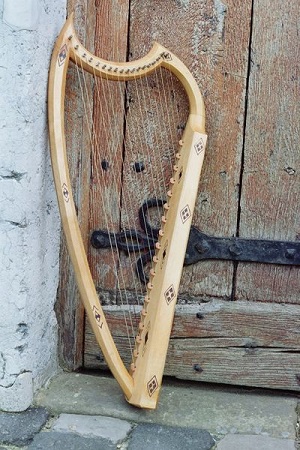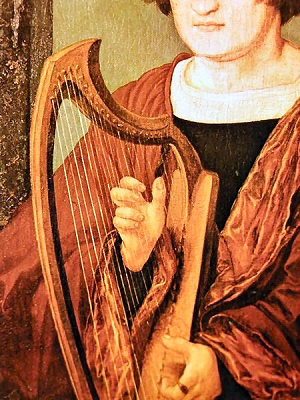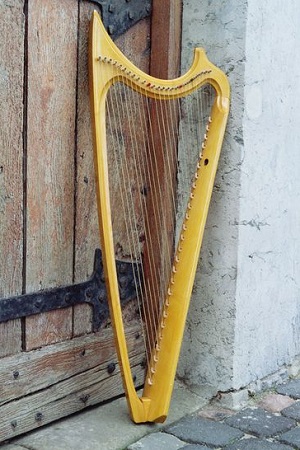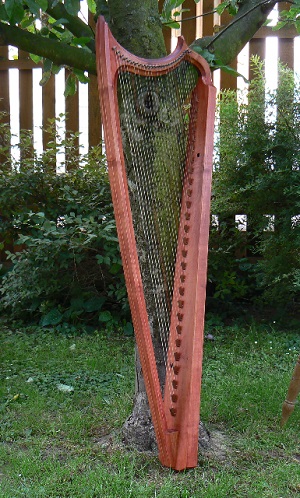The Middle Ages were a time where people were dominated by the Church and faith. Life had to be conducted following the ecclesiastical rules, in reverence for God and in purity of soul. The aim of life was resurrection into heaven and eternal life. The only other option was agony in hell.
This striving for God is shown in the fashion and the architecture of the period. The Gothic style of building took over from the Romanesque style in the 12th century. Slim, upward pointing arches are the definitive form in sacred buildings. The harp too is affected by the Gothic style of building.
The Middle Ages have left us with an abundance of iconographical presentations of harps which inspire reconstructions. Unfortunately there are only very few original historical instruments, which are of great significance for the study of historical harps.
Lochner harp
 Early gothic harp from the 14th century
Early gothic harp from the 14th century
Instrument based on the Cologne artist Stephan Lochner’s altar screen painting “Mary in the Rose Garden”.
- Maple
- bray pins
- waxed
- painted
- 18 strings
- Range d-g’’
Holbein harp
 Harp dated around 15th century
Harp dated around 15th century
Instrument based on a portrait of Johannes Zimmermann by Ambrosius Holbein
- Maple
- bray pins
- stained
- waxed
- 22 strings
- Range G- g’’
Nürnberg Harp
 Gothic harp, around 1530
Gothic harp, around 1530
The so-called Nuremberg harp in the Germanisches Museum Nürnberg
- Maple
- bray pins
- stained
- waxed
- 26 strings
- Range G-d’’’
Memling harp around 1450
This tall harp is depicted by Hans Memling on four of his altar screen paintings. The instrument illustrated must have been available for the painter as a model for his artwork, which is why I wanted to make this interesting harp accessible to musicians in the early music field. The reconstruction is based on the four iconographical depictions.
 The harp has a strong bass tone and a fine, bright descant, which can be varied even more by the use of the bray pins. Mediaeval and renaissance music can be played equally well on this harp. Stringing can include an extra B flat in the upper octaves on request.
The harp has a strong bass tone and a fine, bright descant, which can be varied even more by the use of the bray pins. Mediaeval and renaissance music can be played equally well on this harp. Stringing can include an extra B flat in the upper octaves on request.
- Wood: ´ Maple
- Height: 137 cm
- Strings: 26 in gut or carbon
- Range: F - c'''
- Weight: 1.9 kg
